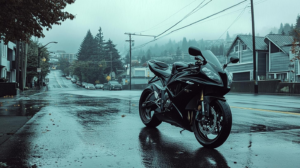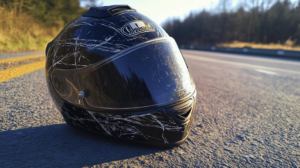Ever wondered what keeps police motorcycle officers protected on the open road? It's not just any helmet—government-issued helmets are specially designed with advanced features to enhance safety and performance on duty.
Dive into the world of police motorcycle helmets to discover the top picks like the Shoei Syncrotec Police Motor Officer helmet, renowned for its M5 Switchblade Power System. Explore the attributes that set these helmets apart and learn why their design makes them indispensable in law enforcement.
This journey into specialized helmet design is integral for anyone wanting to understand the forefront of motorcycle safety technology.
Popular Police Motorcycle Helmets
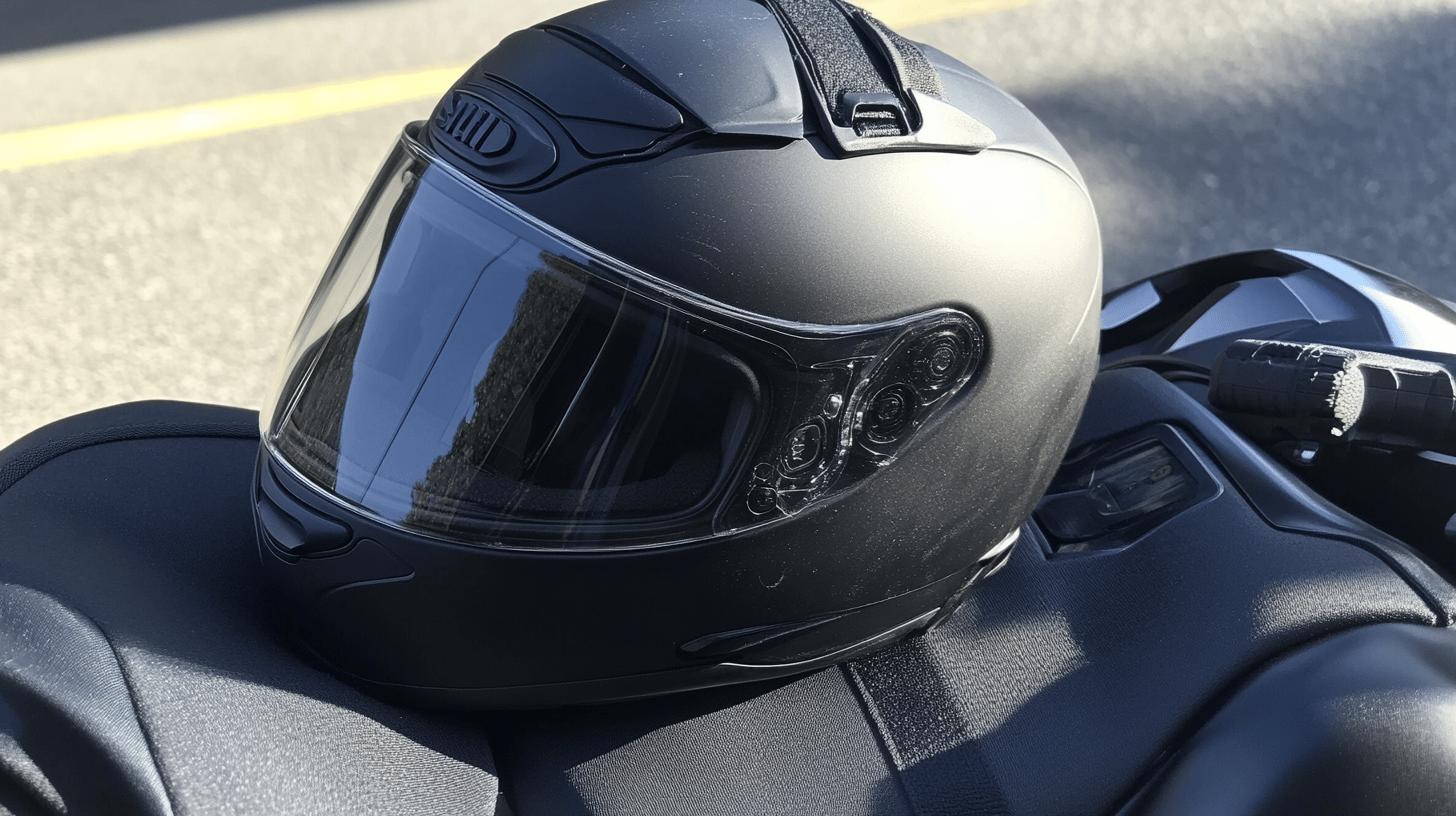
Police motorcycle helmets serve a crucial role in maintaining safety and performance during law enforcement duties. These helmets are specialized to meet the unique demands faced by officers, providing not only protection but also essential features that aid in communication and visibility.
The right helmet ensures officers can perform their duties with confidence, knowing they are safeguarded by high-quality equipment.
Among the most popular choices for police motorcyclists are helmets from renowned brands like Shoei and HJC. The Shoei Syncrotec Police Motor Officer helmet is especially noted for its advanced features, including the M5 Switchblade Power System.
This system supports rider-to-rider communications and powers integrated LED lights, enhancing visibility. Other notable helmets include the Shoei RJ-Air LE and Shoei ST-LE, both designed with law enforcement in mind. The HJC AC-2 LE is another favored model, known for its balance of comfort and durability.
-
M5 Switchblade Power System: Powers LED lights and supports communication devices.
-
Integrated Communication Systems: Facilitates seamless rider-to-rider interaction.
-
Lightweight Construction: Reduces fatigue during extended patrols.
- Durability and Protection: Built to withstand rigorous use.
The reliability and reputation of brands like Shoei and HJC are paramount when selecting police motorcycle helmets. These manufacturers are trusted for their commitment to safety standards and innovative designs that cater specifically to the needs of law enforcement officers.
Choosing a helmet from such reputable brands ensures that officers are equipped with gear that performs consistently under pressure, contributing to their overall safety and effectiveness in the field.
Key Features of Police Motorcycle Helmets

Advanced features in police motorcycle helmets are critical for enhancing the safety and efficiency of officers on duty. These helmets are equipped with specialized technology and design elements that address the unique challenges police motorcyclists face. From communication systems to visor options and customization capabilities, these features ensure optimal performance and protection.
Communication Systems
Integrated communication systems are indispensable in police helmets. With the inclusion of Bluetooth technology, helmets facilitate seamless rider-to-rider communication and connectivity with command centers.
This functionality is crucial for coordinating responses during operations and ensuring that officers can communicate effectively in real-time. The M5 Switchblade Power System exemplifies this integration by powering communication devices, making it a vital feature in modern police helmets.
Visor Options
Visor options in police helmets cater to the varying environmental conditions officers encounter. Anti-fog visors are essential for maintaining clear vision in humid or cold weather, preventing condensation from obstructing the officer's view.
Tinted visors offer protection against sunlight glare, enhancing visibility during daytime operations. These visor features are vital for ensuring safety and operational efficiency in diverse scenarios.
Customization
Customization in police helmets provides both functional and aesthetic benefits. Helmets can be personalized with decals representing the police department, promoting identity and authority.
Adjustable fit systems ensure that helmets remain comfortable and secure, accommodating different head sizes and shapes. This adaptability enhances wearability, reducing fatigue and increasing focus during long shifts.
| Feature | Description |
|---|---|
| Communication Systems | Integrated Bluetooth for seamless communication. |
| Visor Options | Anti-fog and tinted visors for clarity and protection. |
| Customization | Helmet decals and adjustable fit for personalized comfort. |
These key features are integral in meeting the specific needs of police motorcyclists. By incorporating advanced communication systems, versatile visor options, and customizable elements, these helmets provide a comprehensive solution for safety and effectiveness in law enforcement duties.
Safety Standards and Certifications for Police Helmets
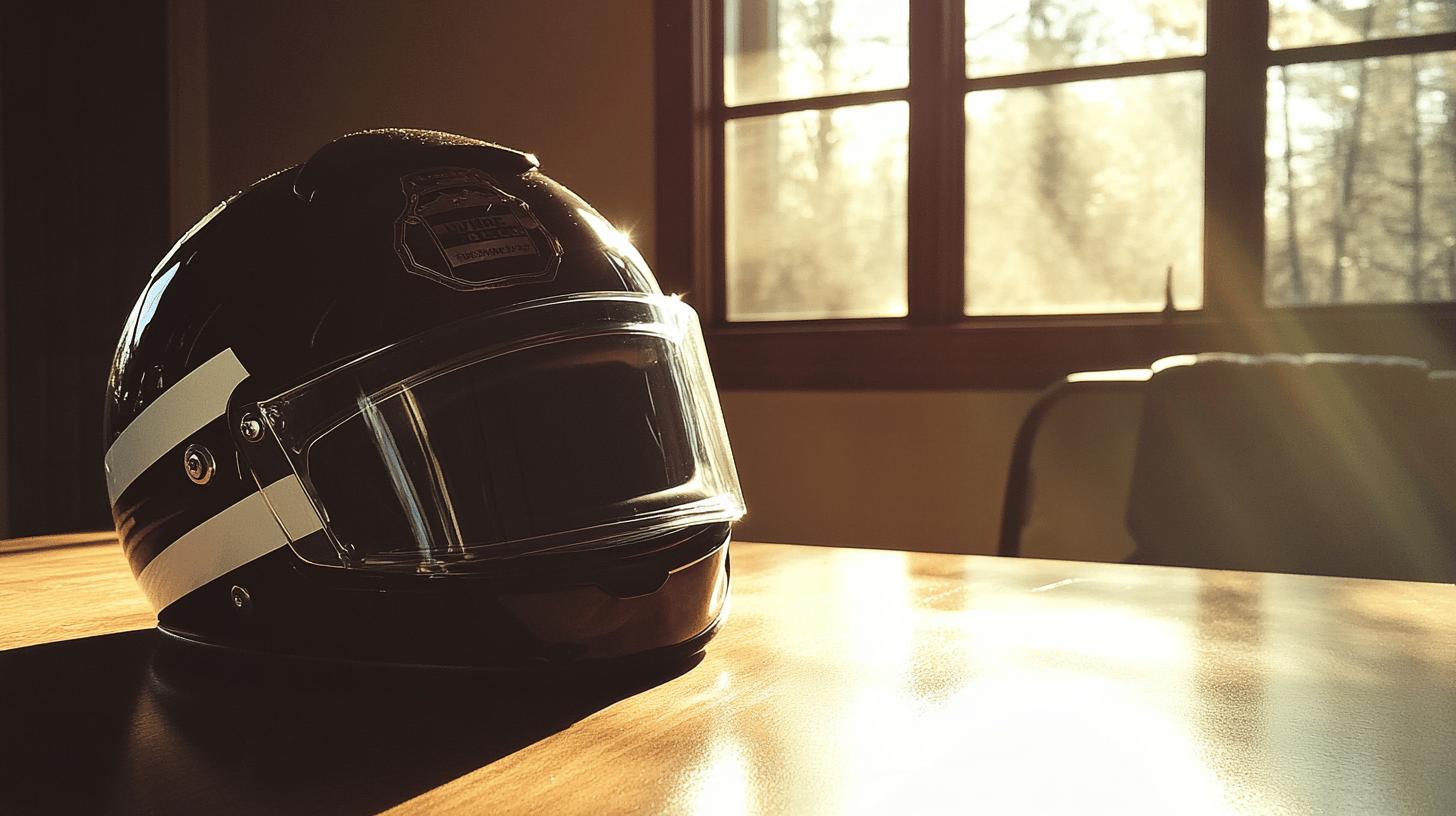
Safety standards in police motorcycle helmets are critical for ensuring officer protection during patrols. These helmets are designed to meet rigorous safety criteria, providing the necessary defense against impacts and environmental hazards. Adhering to these standards is non-negotiable, as police officers rely on their helmets to safeguard them in high-risk situations.
DOT certification is a fundamental requirement for police helmets in the United States. What does DOT certification imply? It ensures that helmets meet the Department of Transportation's specific guidelines for impact resistance, penetration protection, and retention system effectiveness.
Beyond DOT certification, there are other significant regulations like the Snell Memorial Foundation and ECE (Economic Commission for Europe) standards that some departments may consider for enhanced safety measures.
-
DOT Certification: Ensures compliance with federal safety standards.
-
Snell Certification: Offers additional rigorous testing for impact protection.
-
ECE Certification: Provides a European standard recognized for quality and safety.
These certifications greatly influence helmet design and performance. By adhering to stringent safety standards, helmet manufacturers can create products that not only provide critical protection but also enhance comfort and usability.
The integration of safety features must align with these certifications, ensuring that helmets deliver optimal performance under real-world conditions while maintaining officer safety as the top priority.
The Role of Helmet Design in Police Safety

Helmet design is fundamental in ensuring the safety and performance of police motorcyclists. A well-designed helmet not only protects the officer from potential impacts but also enhances comfort and usability during long patrols. The integration of safety features and ergonomic considerations is crucial in enabling officers to perform their duties effectively while minimizing risks.
An aerodynamic design is key in police helmets, reducing wind resistance and noise, which can significantly affect concentration and endurance during high-speed pursuits or extended rides. By streamlining the helmet's shape, manufacturers can enhance stability and reduce fatigue.
Lightweight materials, such as those used in the Shoei Syncrotec, further contribute to comfort by minimizing the strain on the neck and shoulders, allowing officers to remain alert and responsive.
-
Impact Protection: Helmets are designed to absorb and distribute impact forces, safeguarding against head injuries.
-
Aerodynamic Efficiency: Reduces wind drag and noise, improving stability and rider focus.
-
Lightweight Construction: Utilizes advanced materials to decrease fatigue and increase comfort.
-
Durability: Built to withstand harsh conditions and rigorous use, ensuring long-term reliability.
-
Ventilation: Proper airflow systems prevent overheating, maintaining comfort in varying climates.
These design features play a pivotal role in reducing risks associated with police duties. By focusing on impact protection, aerodynamic efficiency, and comfort, helmets enable officers to maintain high levels of performance without compromising safety. This careful balance of protection and practicality ensures that police motorcyclists can operate efficiently, even in the most demanding environments.
Technological Innovations in Police Helmets
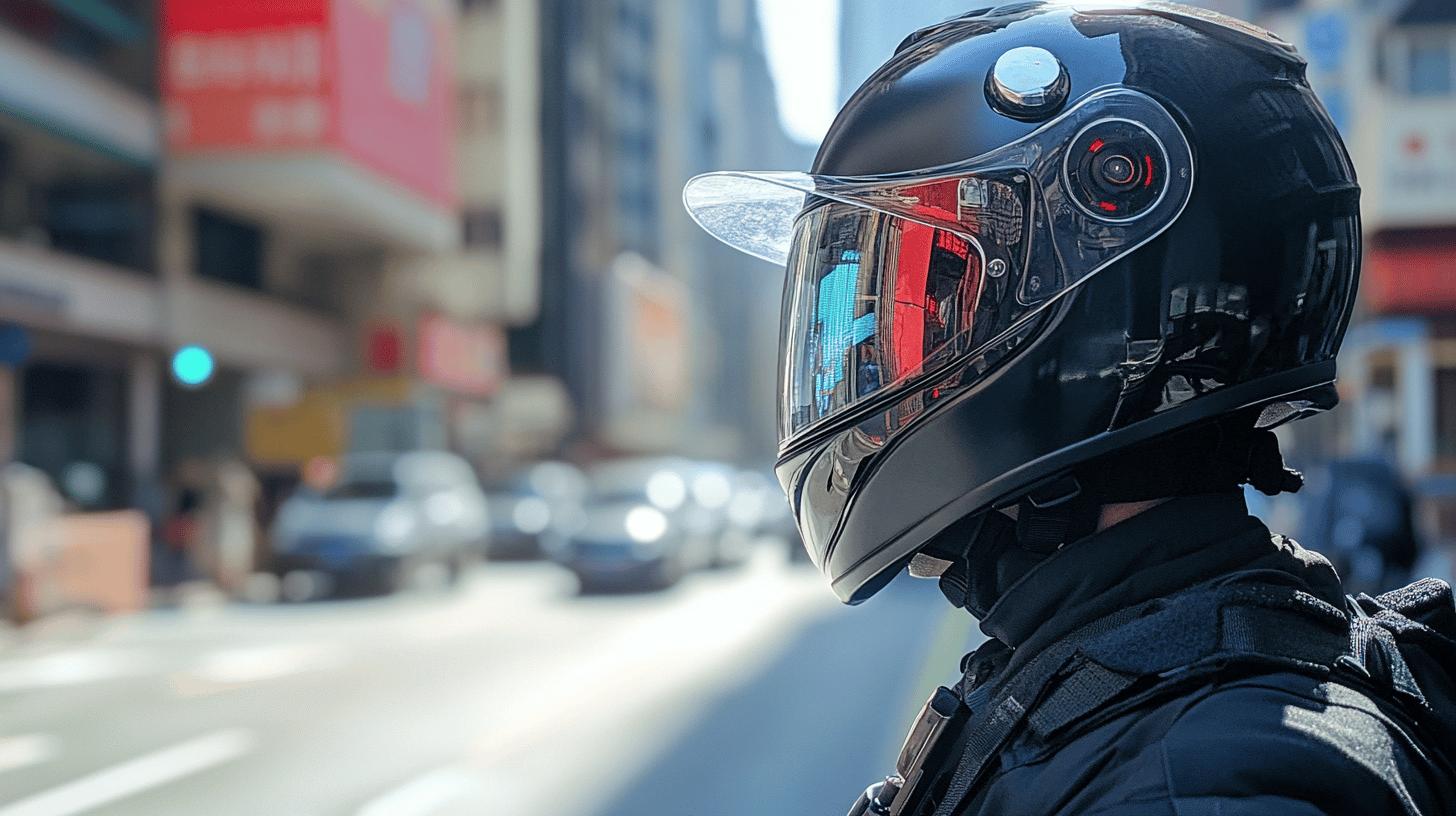
In recent years, the integration of cutting-edge technology into police helmets has become a pivotal trend in enhancing the functionality and safety of law enforcement gear. The demand for helmets that go beyond basic protection has driven manufacturers to incorporate advanced features that improve communication, visibility, and overall performance. This technological evolution meets the dynamic needs of police motorcyclists, providing tools that are both protective and operationally beneficial.
The M5 Switchblade system stands out as a revolutionary advancement in helmet technology. Recognized for its multipurpose capabilities, the system powers essential features such as LED lights, which enhance visibility during nighttime patrols.
Additionally, it supports rider-to-rider communication systems, allowing seamless real-time interaction. The potential to integrate heads-up displays and cooling fans further underlines the system's versatility, proving invaluable for officers in various operational scenarios.
-
Heads-Up Displays: Provide real-time data, improving situational awareness.
-
Cooling Systems: Maintain comfort during extended use and in high-temperature environments.
-
LED Integration: Enhances visibility and safety in low-light conditions.
- Communication Enhancements: Facilitates uninterrupted connectivity between officers and command centers.
These innovations significantly contribute to the safety and operational efficiency of police motorcyclists. By incorporating features like heads-up displays and integrated communication systems, helmets are transformed into smart gear that enhances situational awareness and tactical response.
Cooling systems ensure comfort during prolonged shifts, while LED lights improve night-time visibility, collectively enabling officers to perform their duties more effectively and safely in diverse environments.
Maintenance and Care for Police Motorcycle Helmets

Regular maintenance of police motorcycle helmets is fundamental to ensuring their longevity and protective capabilities. Helmets, being critical safety equipment, require consistent attention to remain effective.
Without proper care, helmets may degrade, compromising the safety of the officer wearing them. Routine inspections and cleaning are essential practices to keep helmets in optimal condition, safeguarding officers during their duties.
-
Cleaning: Use a mild soap solution and a soft cloth to clean the helmet's exterior and interior, removing dirt and debris that can affect performance.
-
Inspecting: Regularly check for any physical damage or wear, such as cracks or loose padding, which could compromise the helmet's safety.
-
Replacing Components: Replace any worn or damaged parts, such as visors or interior liners, to maintain the helmet's protective integrity.
Ongoing helmet inspections play a crucial role in maintaining safety standards. By identifying potential issues early, officers can prevent equipment failure and ensure their helmets provide the necessary protection. This diligence not only extends the helmet's lifespan but also ensures that it meets the rigorous demands of law enforcement work, consistently performing when it matters most.
Final Words
Exploring what helmets do police motorcycle use uncovers a blend of specialized features and advanced technology. From major brands like Shoei and HJC, police helmets are outfitted with attributes such as communication systems and anti-fog visors that enhance operational capabilities.
Safety standards like DOT certification ensure protection, while innovations like the M5 Switchblade power system push boundaries. Regular maintenance further boosts effectiveness, making these helmets pivotal in safeguarding law enforcement personnel.
FAQ
What helmets do police officers typically use?
Police officers generally use helmets designed for durability and communication, like Shoei Syncrotec and HJC AC-2 LE. These helmets often feature advanced systems to support their operational needs.
What are some popular police motorcycle helmets with built-in communication systems?
Police motorcycle helmets like the Shoei Syncrotec often include built-in communication systems such as integrated Bluetooth, allowing efficient rider-to-rider communication, enhancing safety and coordination during patrols.
Are there specific police motorcycle helmets equipped with Bluetooth technology?
Yes, helmets like Super Seer police motorcycle helmets and others are equipped with Bluetooth technology, facilitating communication and operational efficiency without the need for external devices.
Why don't motorcycle cops wear full-face helmets?
Motorcycle cops may avoid full-face helmets to facilitate quick communication and visibility. Models like Shoei RJ-Air LE offer adequate protection while enabling better interaction with the public.
What is a police helmet and what features does it include?
A police helmet is specially designed with features like communication systems, impact protection, and sometimes integrated LED lights, ensuring safety, efficiency, and versatility in police operations.

Mark Anderson is a trusted expert with over 25 years of riding experience. At 56, his deep knowledge of long-distance touring and participation in major motorcycle rallies makes him a reliable source for gear recommendations on ProtectiveGearz. Mark’s decades of firsthand experience ensure his advice is authoritative and valuable to riders seeking expert guidance.
